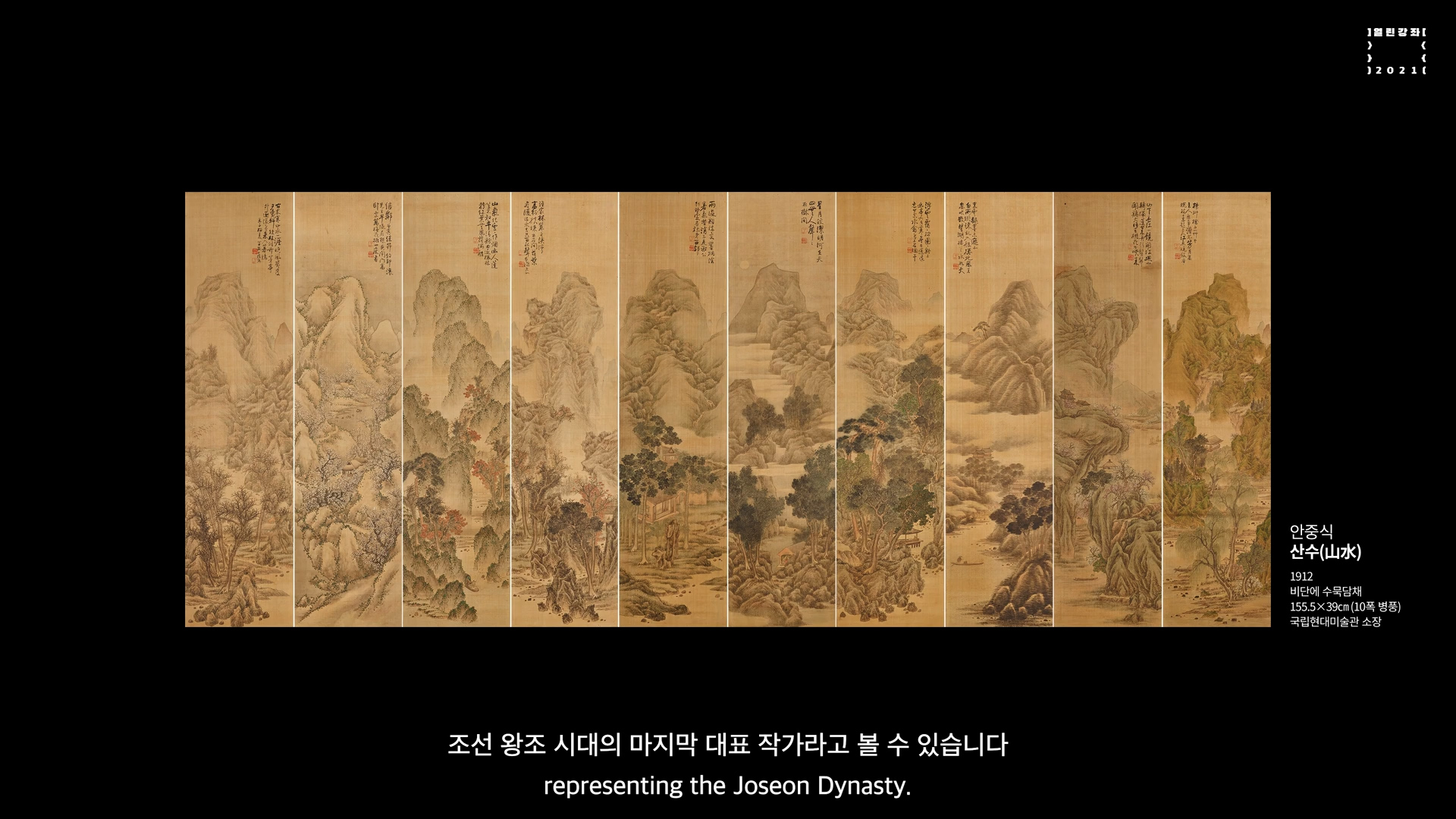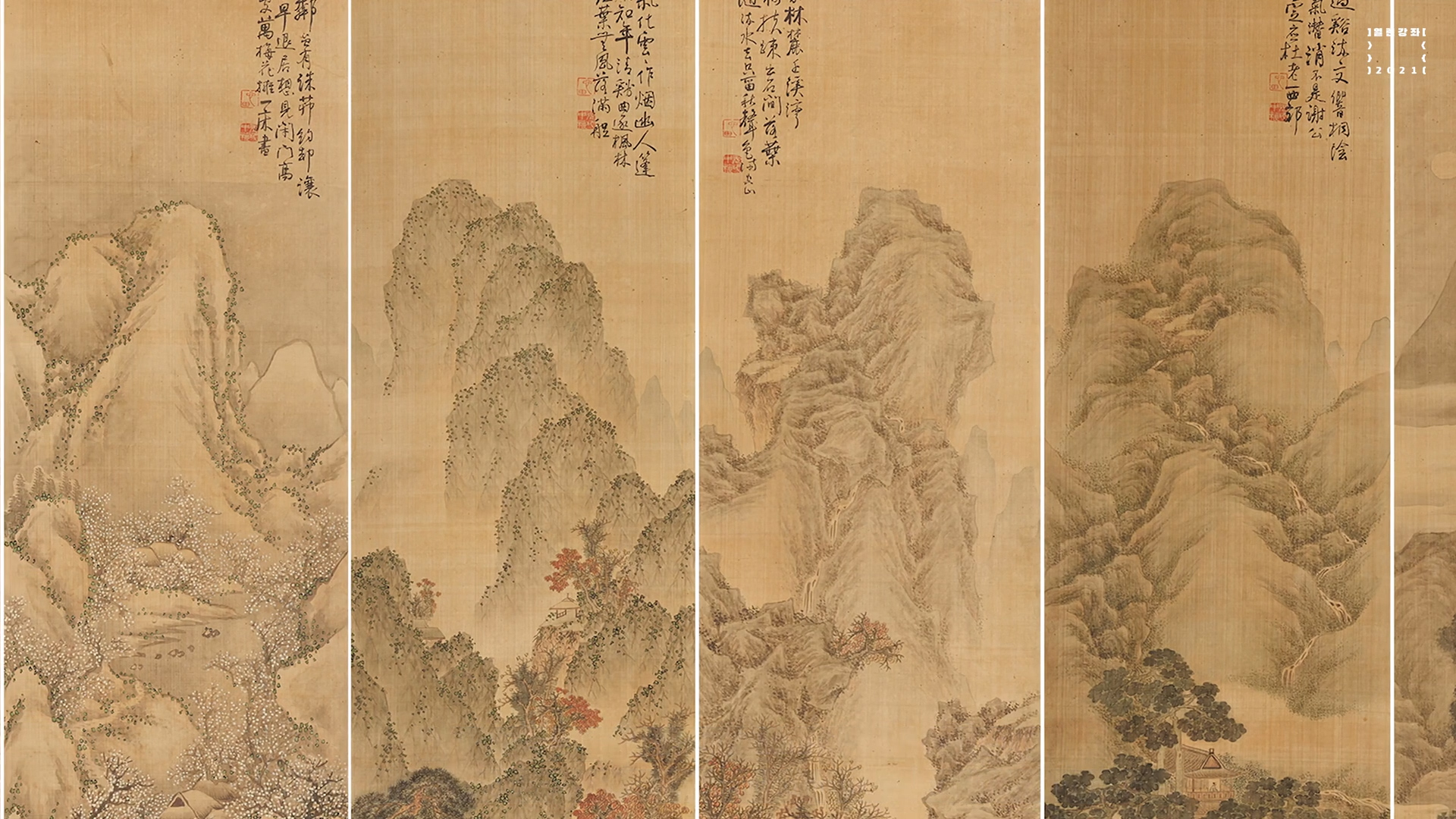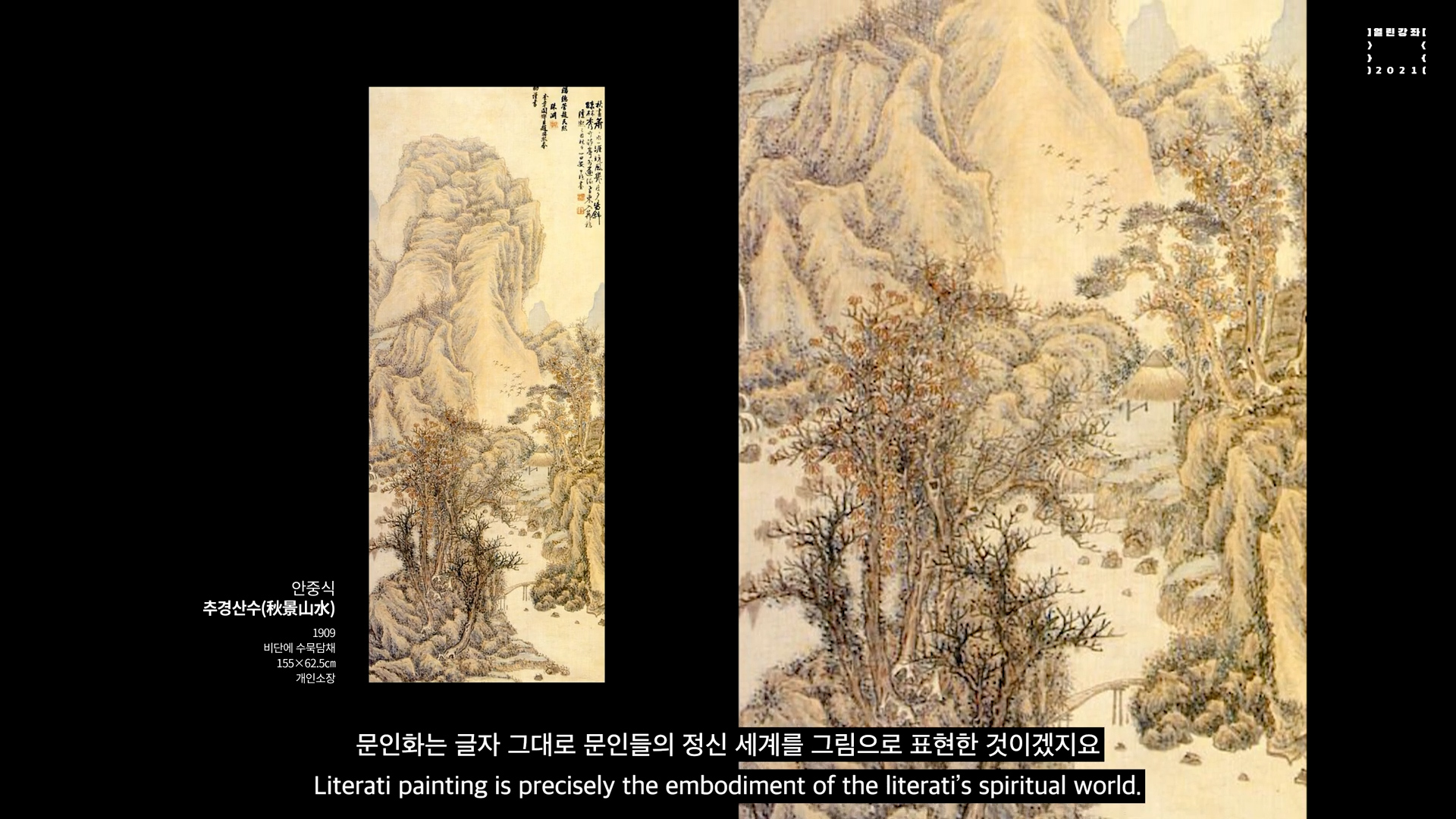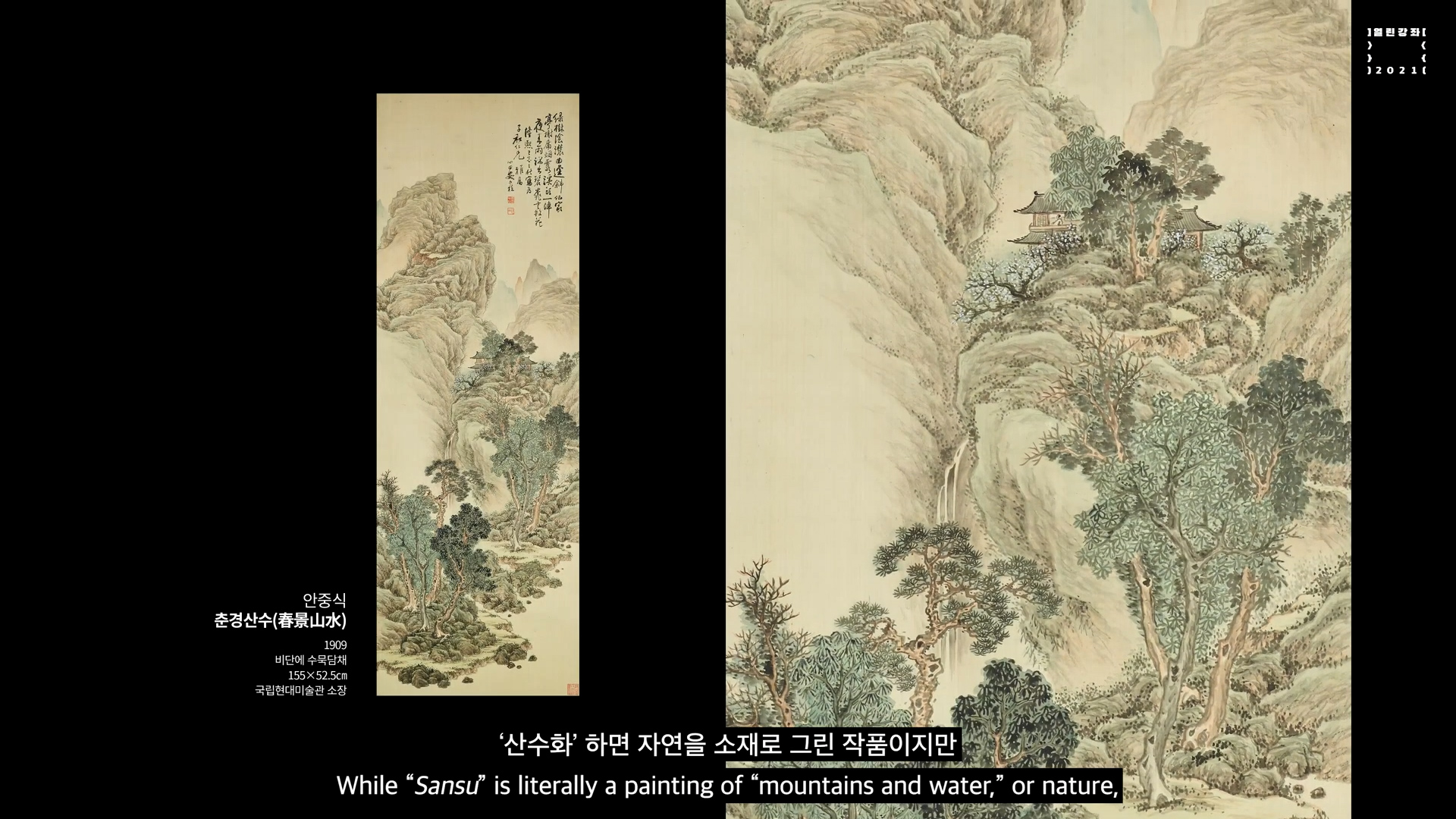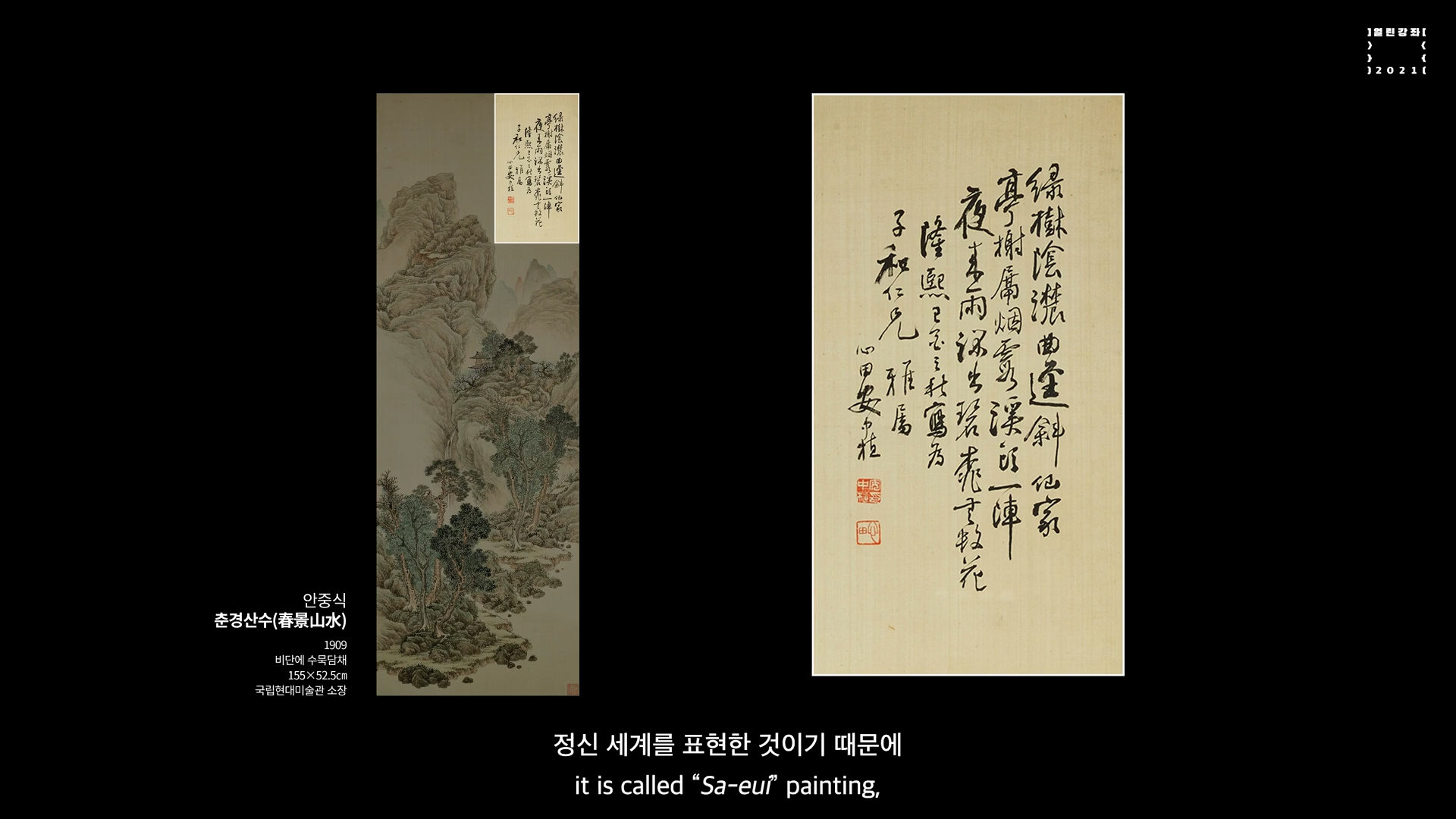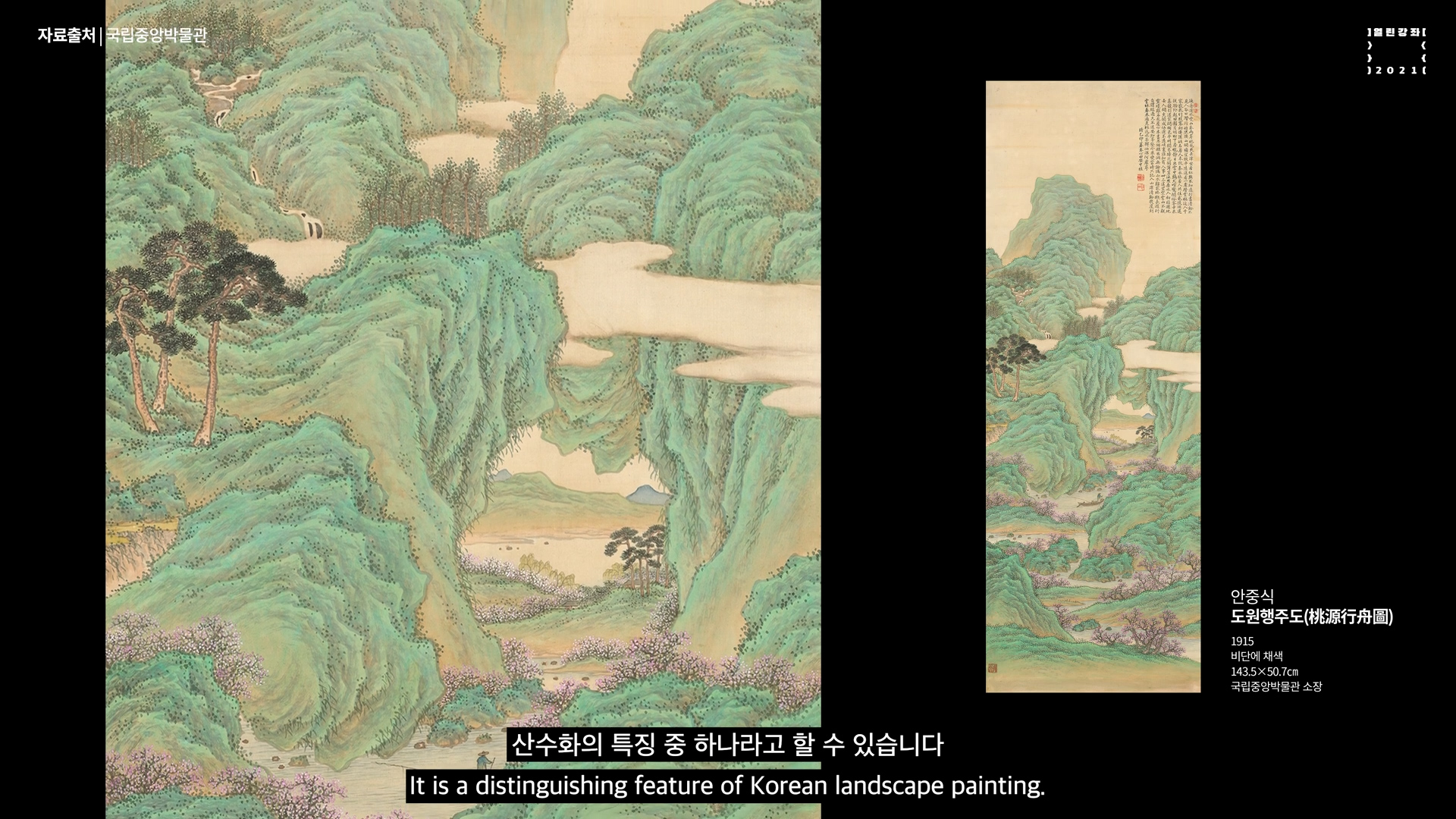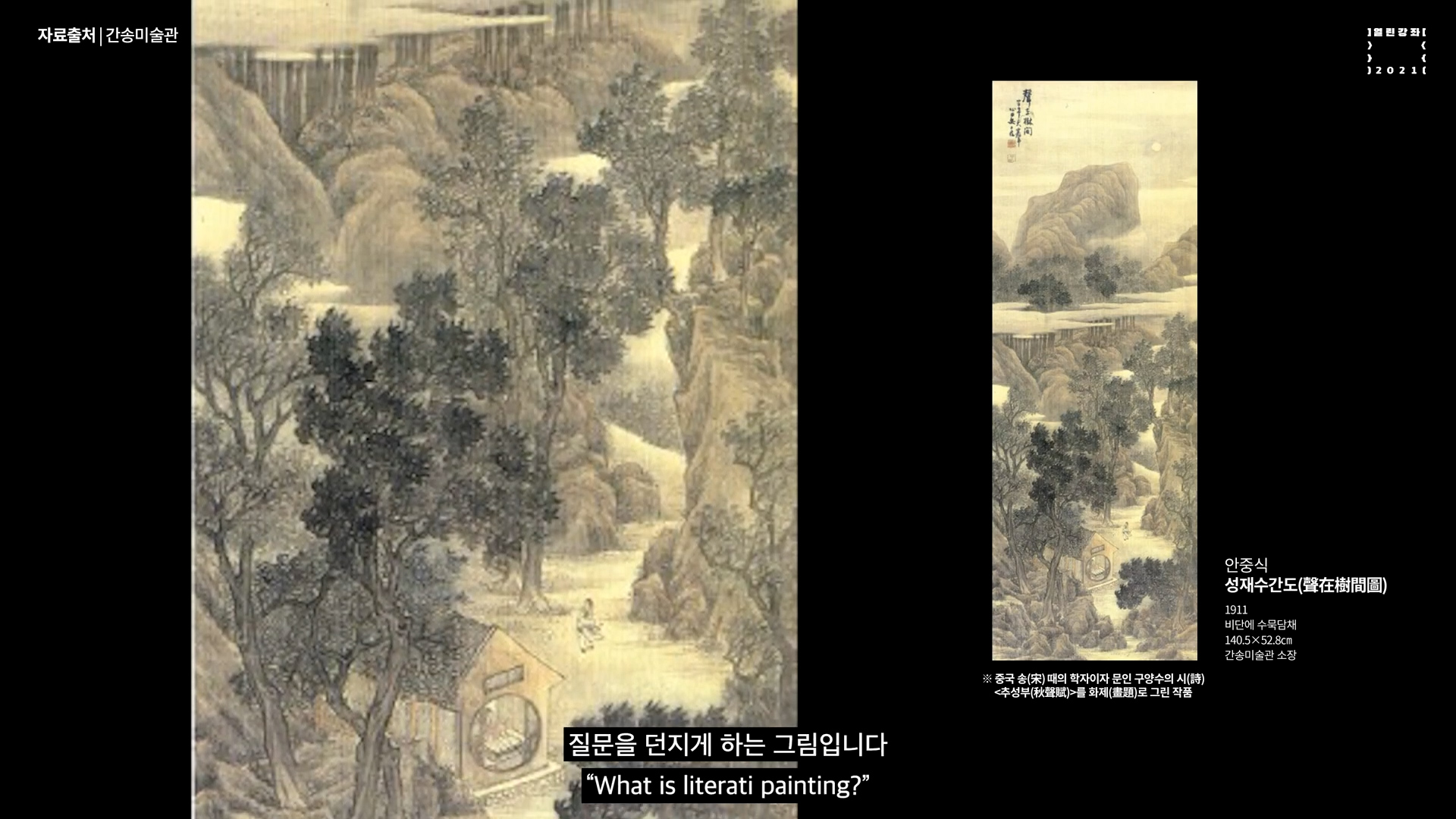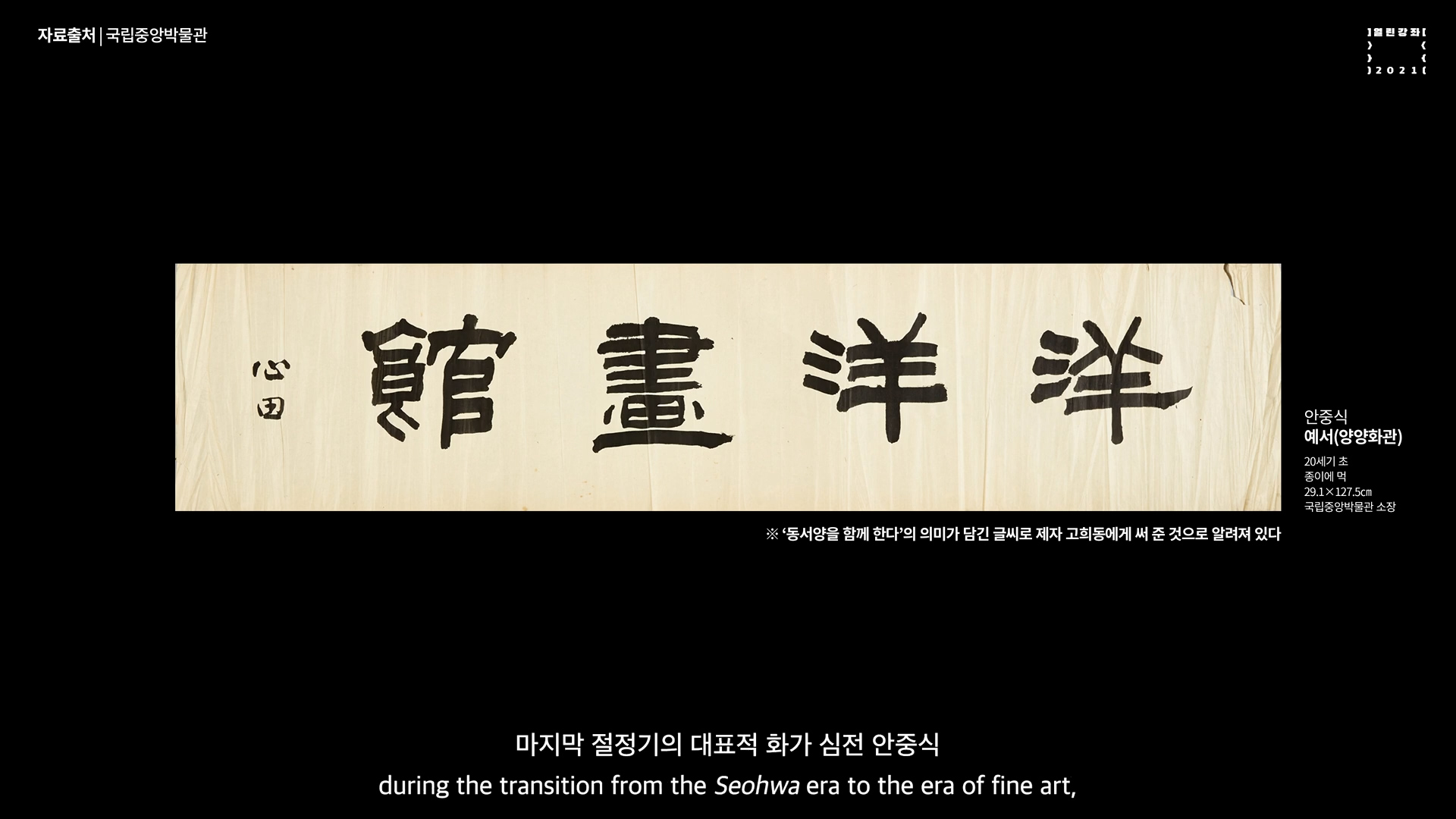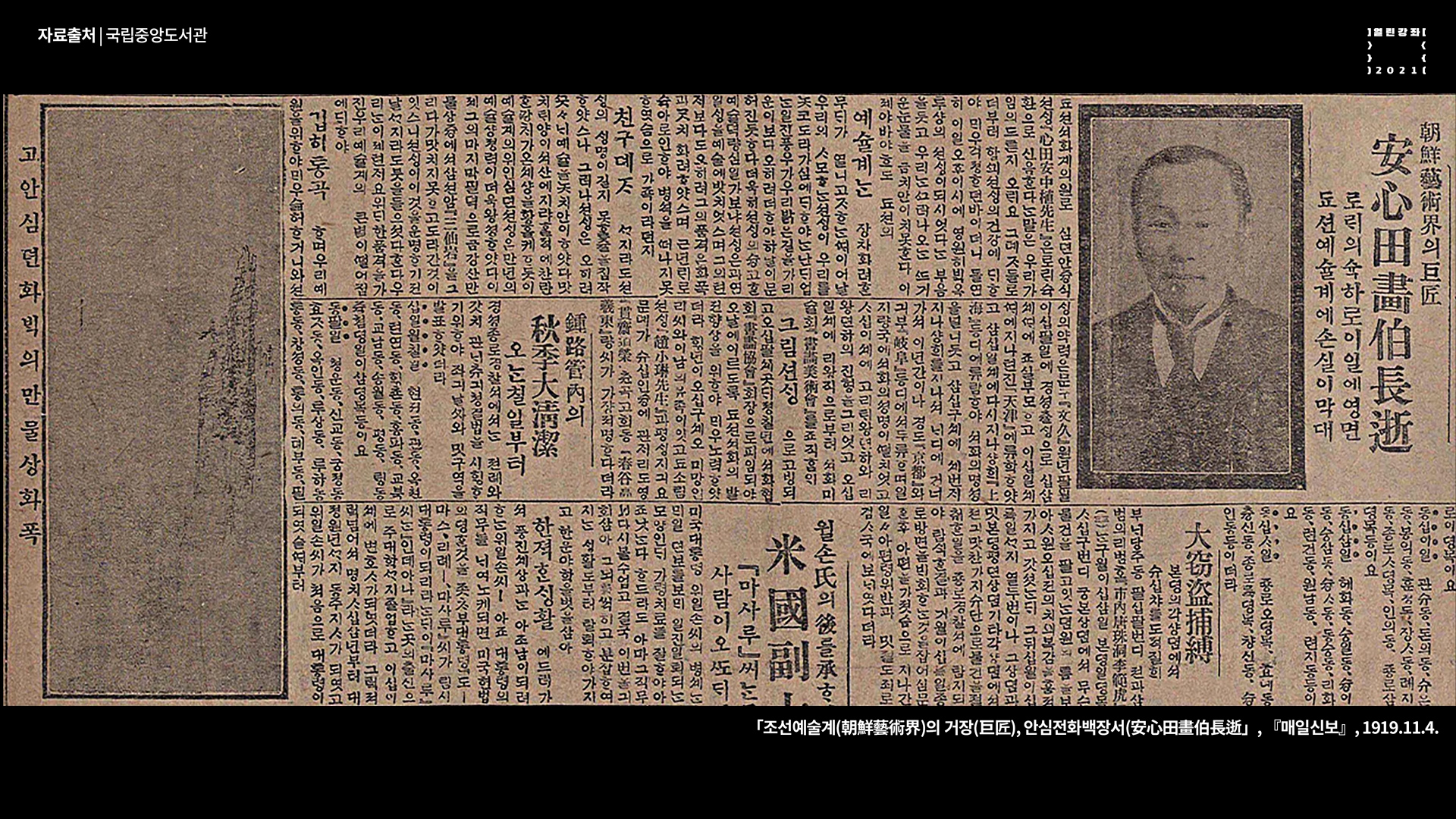Tall trees form mountains, and the four seasons are well presented through the changing trees, starting with the peach blossoms that adorn the spring landscape, and going on to the dark, leafy shades of summer, falling leaves in autumn, and the plum blossoms and bare branches of winter. Like the word “Sansu,” this painting is a combination of mountains(San) and water(Su). In the minds of people in the old days, if the universe could be broadly divided into two, nature could be interpreted and categorized as what moves and what does not. The mountain represented what did not move, and water symbolized movement. Among these two crucial elements of Korean landscape painting, the role of water was especially important. Therefore, in Sansu painting, expressions of water in symbolic or fluid form such as clouds or fog, and water flowing in rivers or valleys, held an important position in the work. That is why many landscape paintings contained views of waterfalls or water surfaces. Sansu painting was thus an expression of the will and desire to adapt to the laws of nature, and become one with nature, while watching the flow of water in the mountains. These characteristics and contents have been portrayed also in An CHoongsik’s 10-panel folding screen painting, through special techniques and compositions using ink and ink wash. It can be said that Sansu painting contains the awareness and highly original way of thinking that we are not separate from the changing seasons or from nature.







